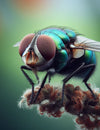
Pest threatens many living things, including plants, humans, and animals. Inscte is one of the leading causes of high economic importance in agriculture. Pests are known to have a detrimental effect on crops and yield.
Various kinds of pests, including weeds, fungi, flies, fleas, termites, and any living organism, harm humans. And also, there are many different kinds of solutions to deal with pests. For example, a pest problem can be lowered or at least can be reduced by conserving good hygiene.
In agriculture, there are four types of pest control methods described. Firstly let us discuss the type of pest. In agriculture, primarily two types of problems defined known as
Micro pest:
Micro pests, as the name described minor in size and hard to notice. Their example is aphids, worms, etc.
Macro pest:
Macro pests are relatively huge and very easy to become into consideration. Good examples of these pests are rodents.
There are four required methods of pest control in agriculture. Usually, selecting these methods depends on the size of the pest.
- Physical method
- Biological method
- Cultural method
- Chemical method
Physical method
This method is very productive in treating the macro pest. On the other hand, a nonchemical pest control method, also known as a mechanical method, demands the physical detection of problems and uses different mechanisms to evict them.
It is a successful technique for rodents like rats, rabbits, and grass cutters. And also, this is a very moderate technique to use.
It uses various mechanisms, including chicken wire, shade cloth, an artificial option like a combative technique, physical objects (variety of traps, alarms, sound, sticky tapes, and caricature), and other scary approaches to get rid of pests. However, this procedure causes no harm to plants or human beings.
Biological method

The biological method is the most technical; it employs other organisms to control the pest—for example, using the chicken to control grasshopper.
-
Fern leaf yarrow is an herbaceous perennial flower that works for vegetable gardens.
-
I am using predatory insects like parasite wasps and episodes spp (hoverflies) to end the insects which are harmful to plant growth.
-
Use of crops such as French marigolds and American marigolds cultivar single gold. These crops repel the roots by vacating roots.
-
Use of antagonists (Antagonists are microbes that vaccinate the plant's surface through various methods. These can apply as a soil drench or foliar spray to treat pests like bees. Antagonists are of many types of Aizawa strains of Bacillus thuringiensis (BT).
-
Use Bacillus subtilis, a bacterium found in soil, to handle powdery mildew.
This method goes to uplift due to the rise of natural products. But this method needs extra care as it could harm plants if it goes wrong.
Cultural method
This routine also includes the natural way of treating pest tension. The cultural method comprises methodologies or technique that raises adverse effect on pests. It is also the old way of treating insects. The horticulturist also suggests this method is crucial to halting plant diseases.
This method is applied before and after planting the seed into the soil. Some of the essential techniques of this method are soil fertility management, crop rotation, plant species selection, pruning methods, companion planting, sanitation, and weeding.
These methods could vary with the type of soil and weather. You can also use fertilized soil to grow and keep pests at bay.
Rouging is also one of the essential techniques used in the cultural method. Term rouging can be defined as removing dead, diseased, and infested plants from the planting area. This method also includes land preparation. And this is one of the easiest methods to use.
Chemical method
This mechanism includes chemicals to treat pests; chemicals are solutions manufactured by toxic and poisonous compounds. The chemical method is considered the last method when treating pests. The chemical method ends with micro pests like aphids, thrips, etc. These used chemicals are generally known as pesticides or insecticides.
The disadvantage of this method is chemicals sprayed on plants can remain on them and be dangerous to consumer health. Moreover, using these chemical compounds can be hazardous for the gardener. Therefore, they are usually used by mixing with water at the recommended rate before spraying.
The pest control mechanism is necessary to use to control the pest. But there are many ways to treat them. Make sure to use the least harmful method to your health and your plant's health. Keep in mind the pest control method should be in favor of your health.



